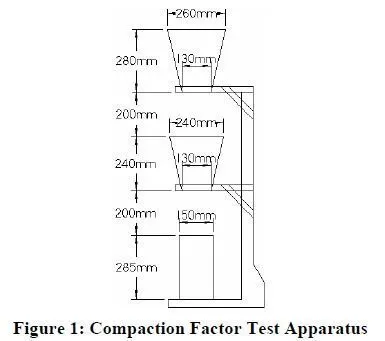The moving sphere viscometer (Powers 1968; Wong et al. 2000) uses the principle of Stokes law to measure the viscosity of concrete. Falling object and drawn object viscometers have been used widely in measuring the viscosity of other materials. A similar test device, the turning tube viscometer, is used for pastes.
To perform the test, concrete is placed in a rigid container, which can be attached to a vibrator in order to measure the concretes behavior under vibration. A steel sphere is then either pushed or pulled through the concrete. The test can be conducted either by applying a constant force to the sphere and recording the location of the sphere in the concrete versus time or by pushing or pulling the sphere through the concrete at a fixed rate and measuring the force required to move the ball. Using Stokes law, the viscosity of the concrete is then calculated as a function of the velocity of the sphere and the force required moving the sphere. Correction factors must be applied to account for assumptions made with regard to Stokes law.
Wong et al. (2000) recently explored the possibility of developing a moving object viscometer for use with low slump concretes. The researchers encountered difficulty in determining a constant, steady state value of force required to pull a sphere through concrete. Although the researchers did not recommend such a moving object viscometer for use with low-slump concretes, they did suggest a conceptual field system.
Advantages:
The physics of the test are well known, allowing viscosity to be measured.
The test can measure the effect of vibration on viscosity.
Disadvantages:
The sphere should be significantly larger than the maximum aggregate size. As a result, the concrete sample must be quite large in order to accommodate typical aggregate sizes.
The test does not provide a direct result. The velocity of the sphere and the force applied to the sphere must be measured and used in an equation to calculate viscosity.
Additionally, correction factors must be applied.
While the test does provide a measure of plastic viscosity, it does not provide a direct measure of yield stress.
Although a conceptual field device has been proposed, the test method would likely be limited mainly to the laboratory. The test is more expensive and complex than most other single-point tests.
